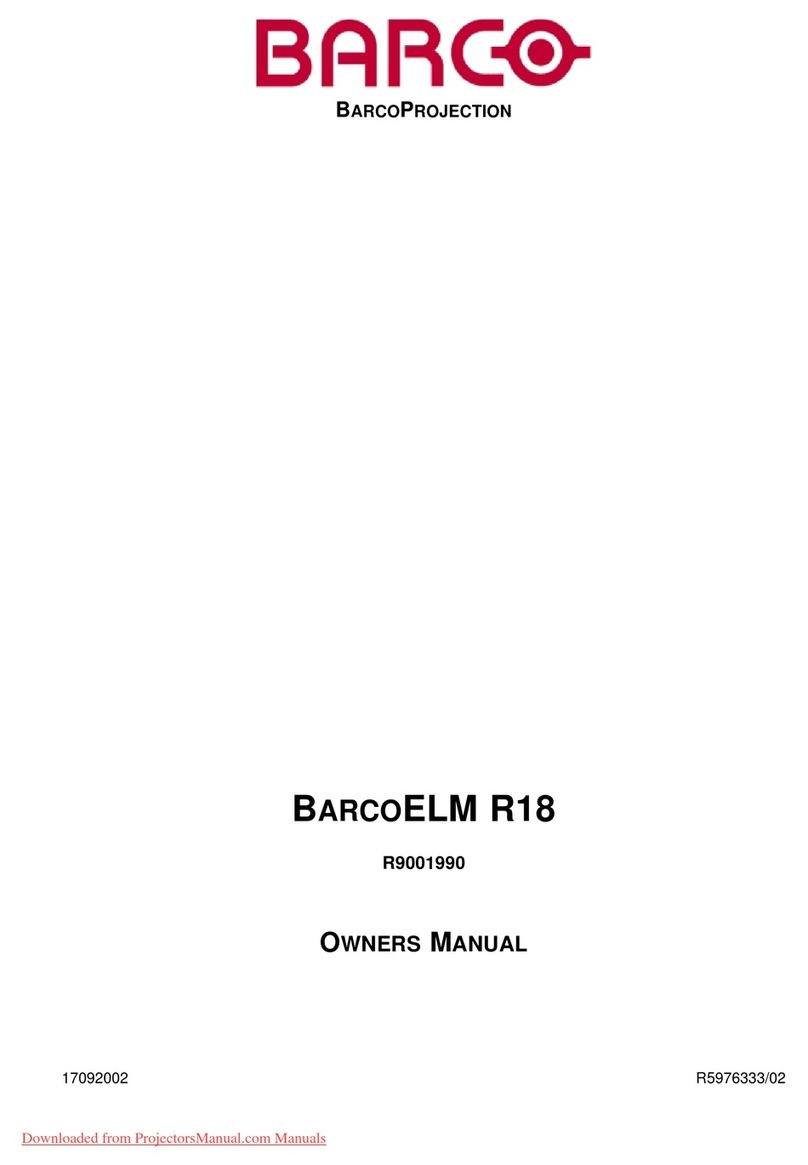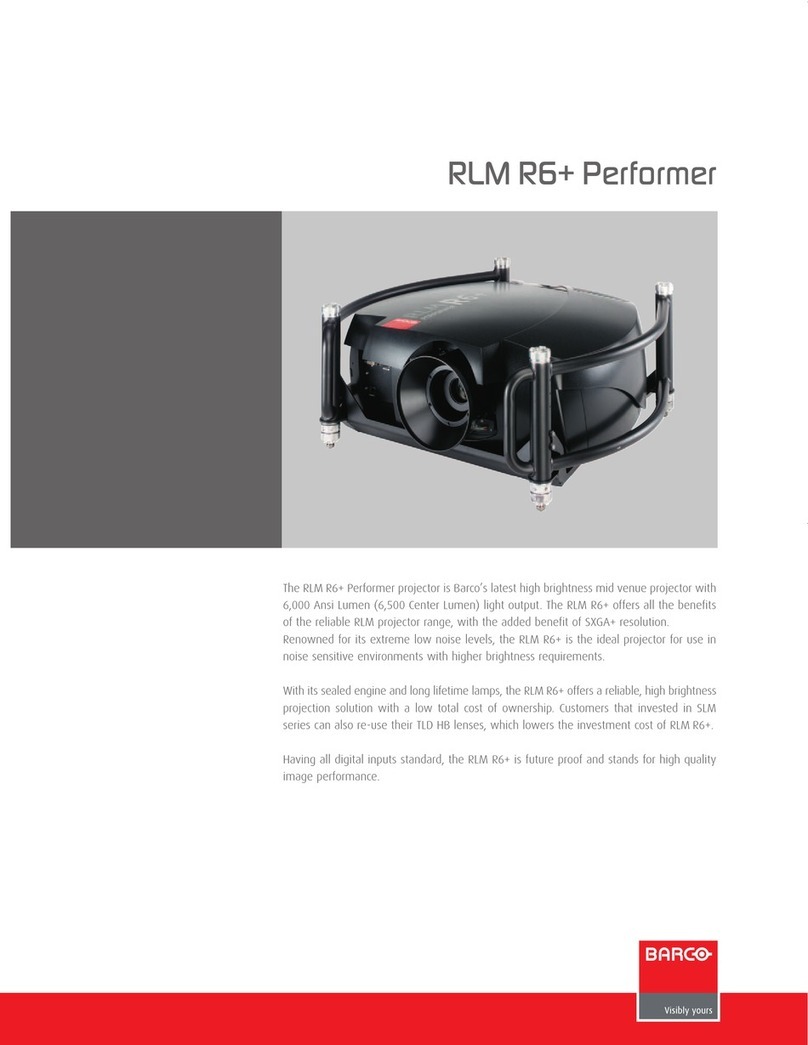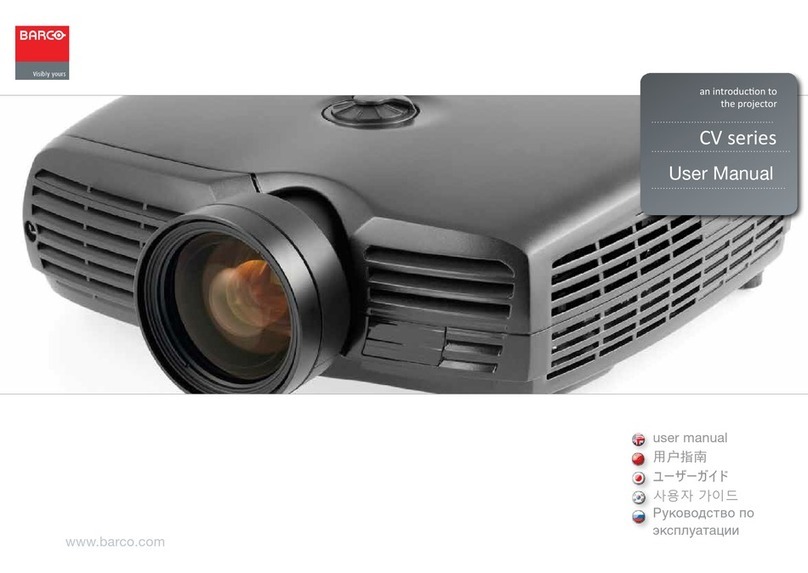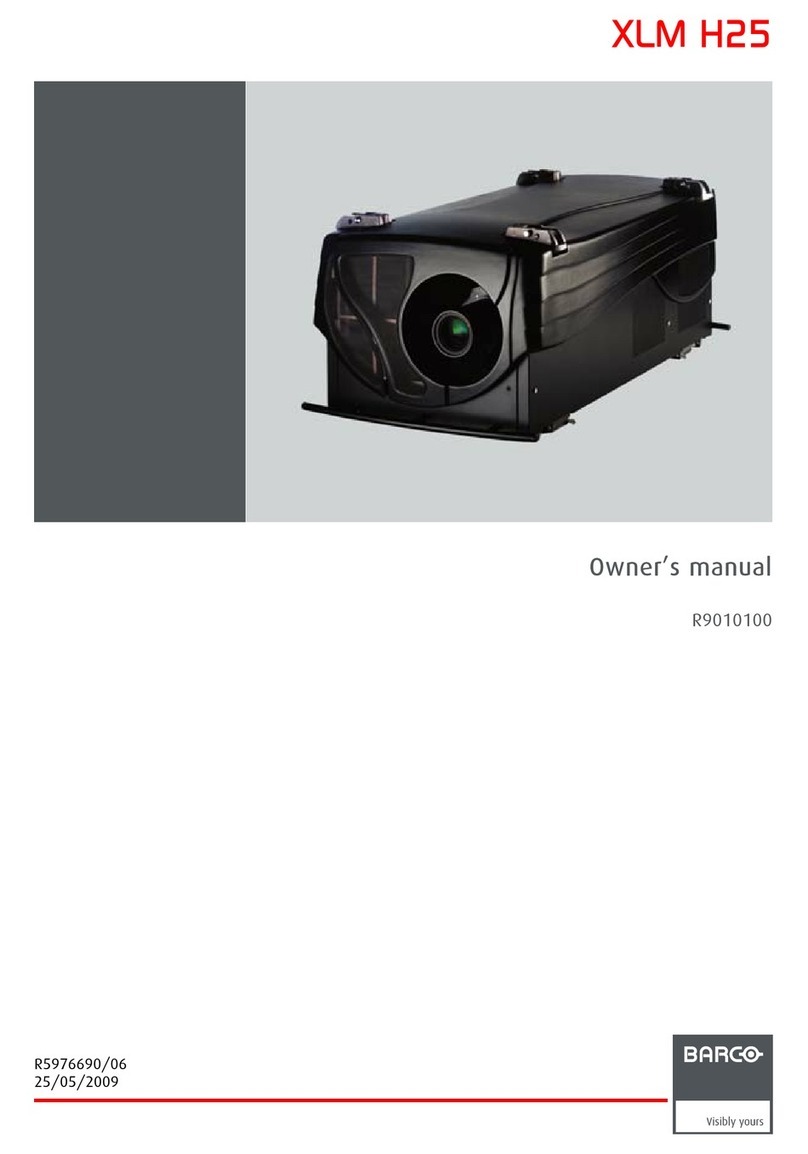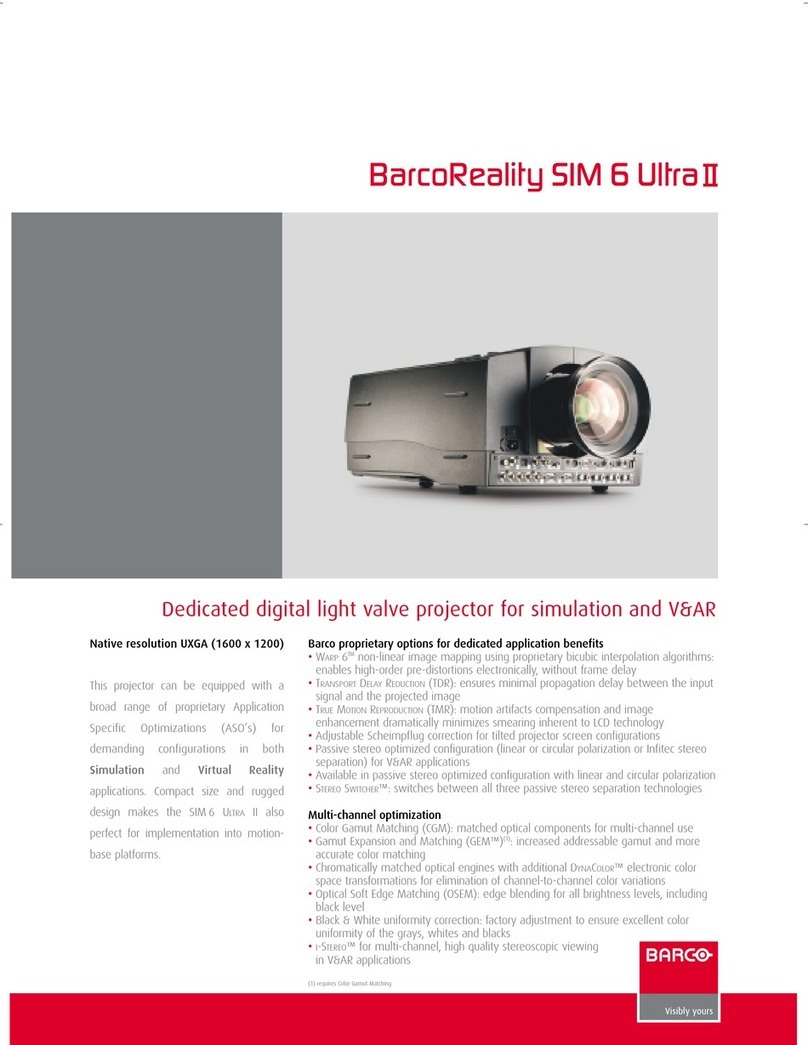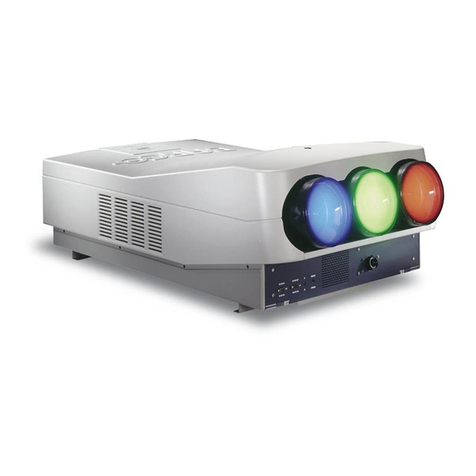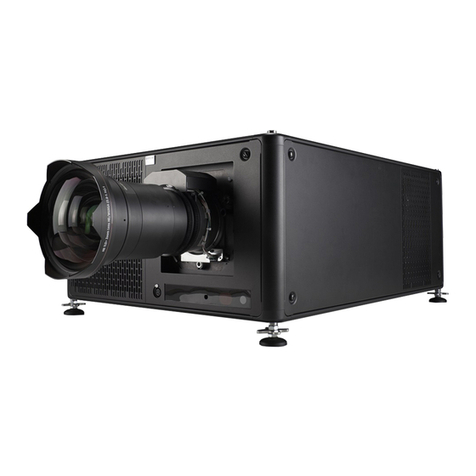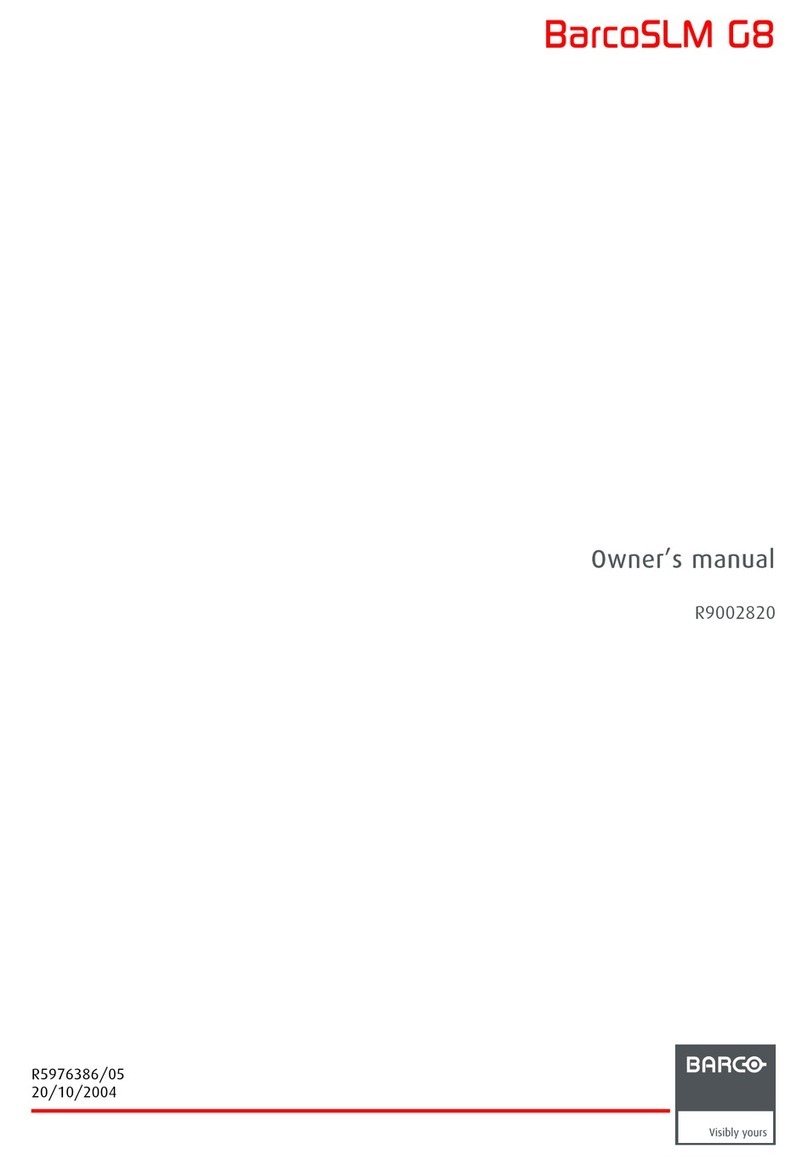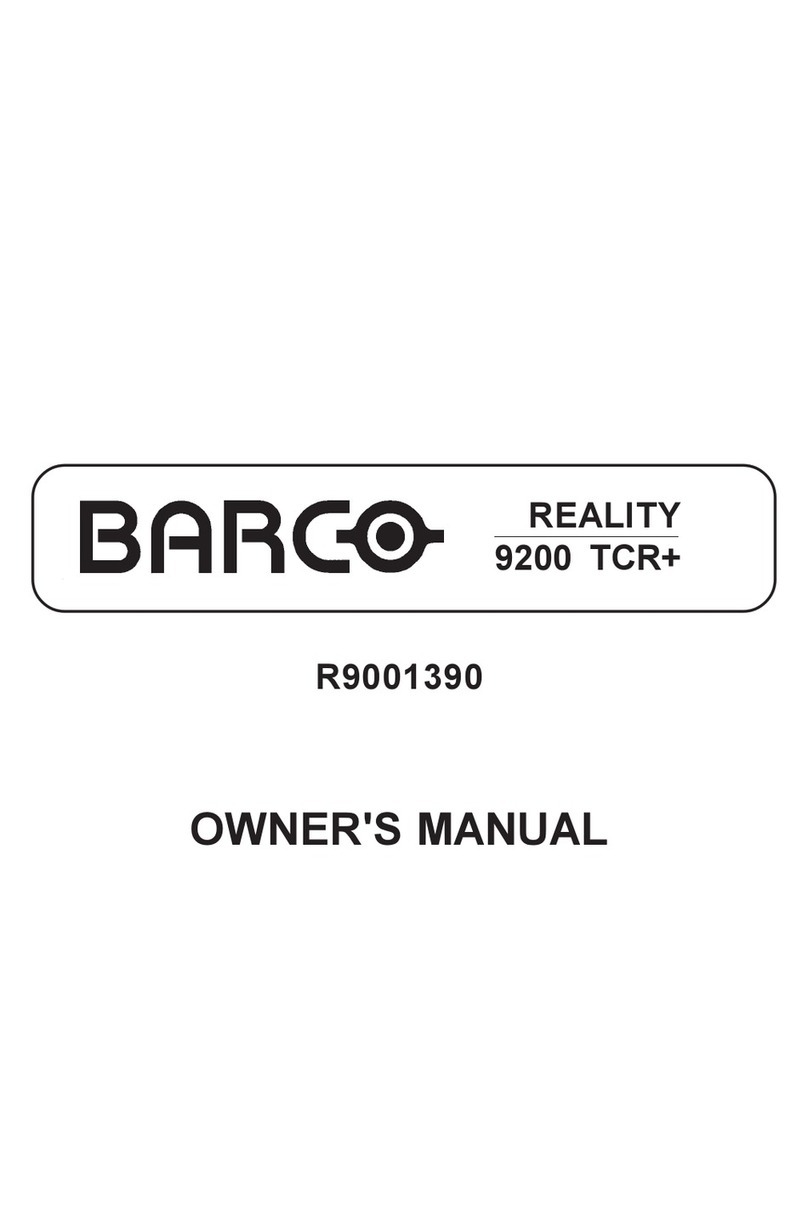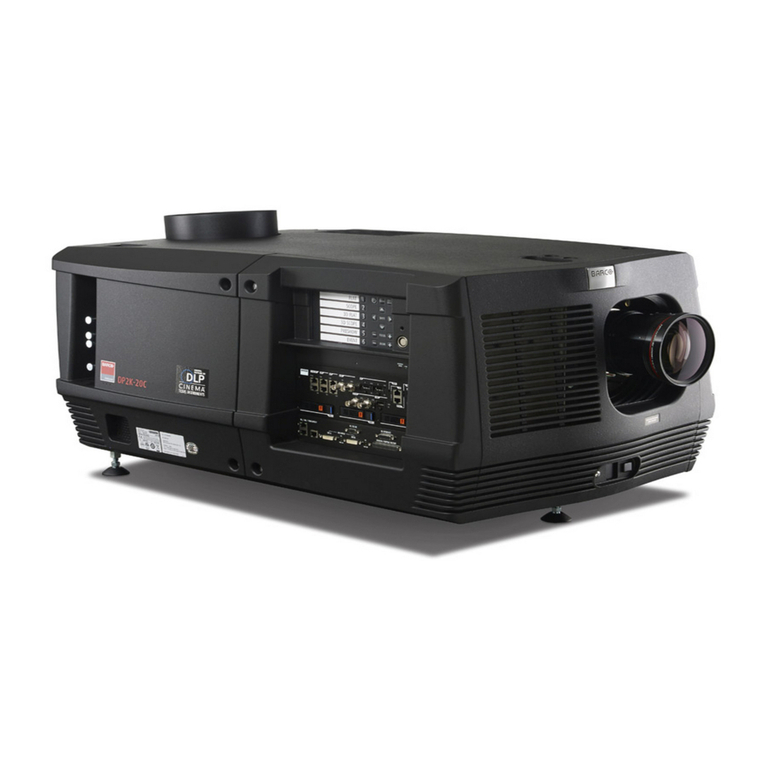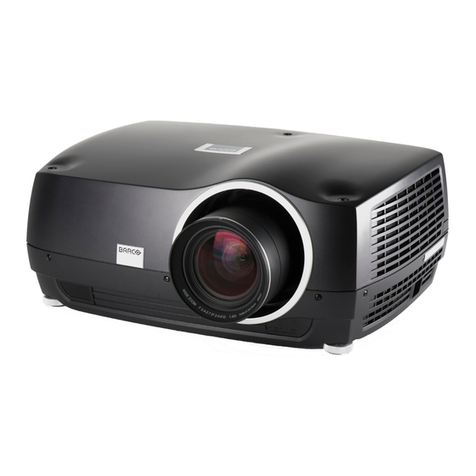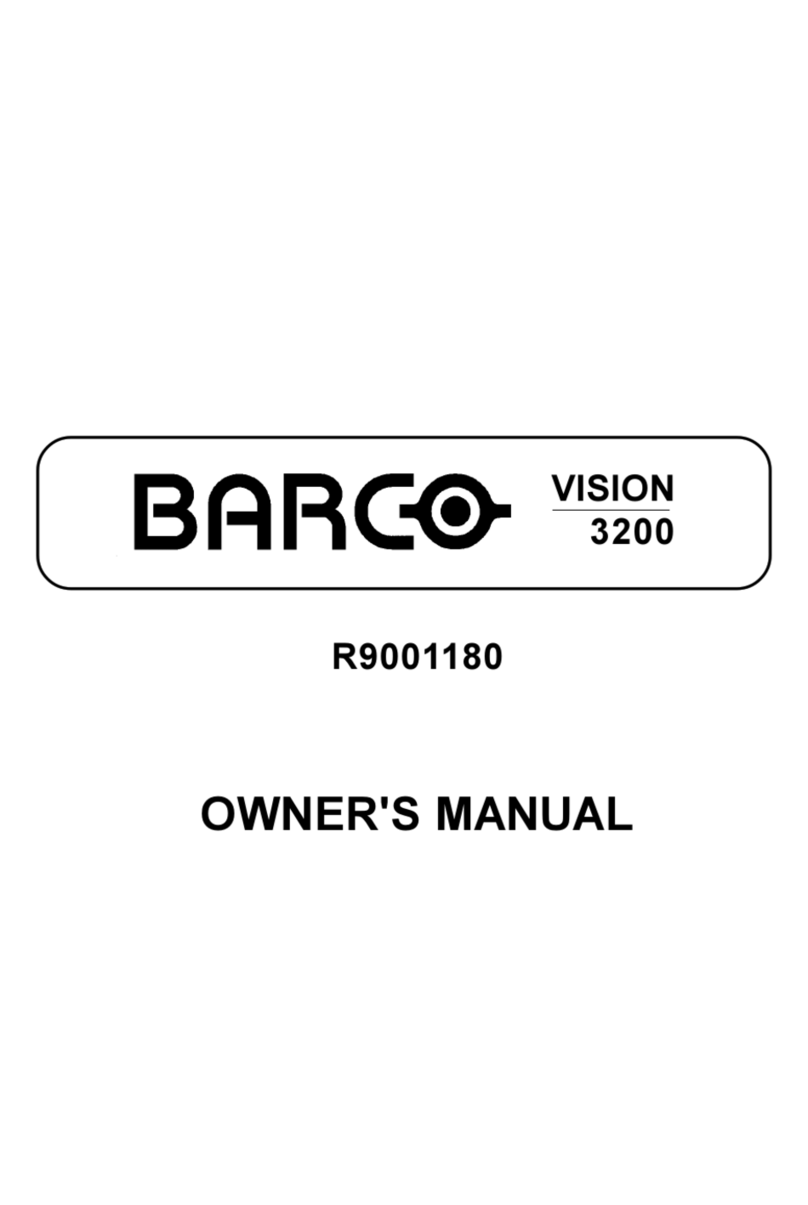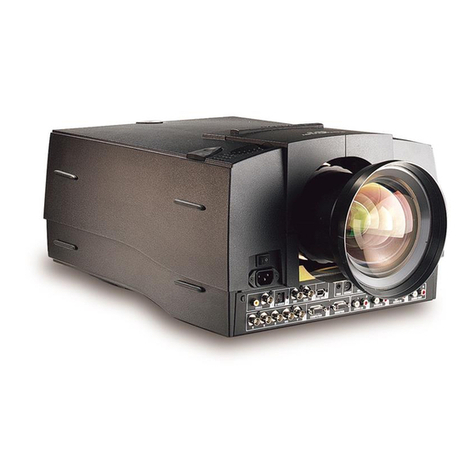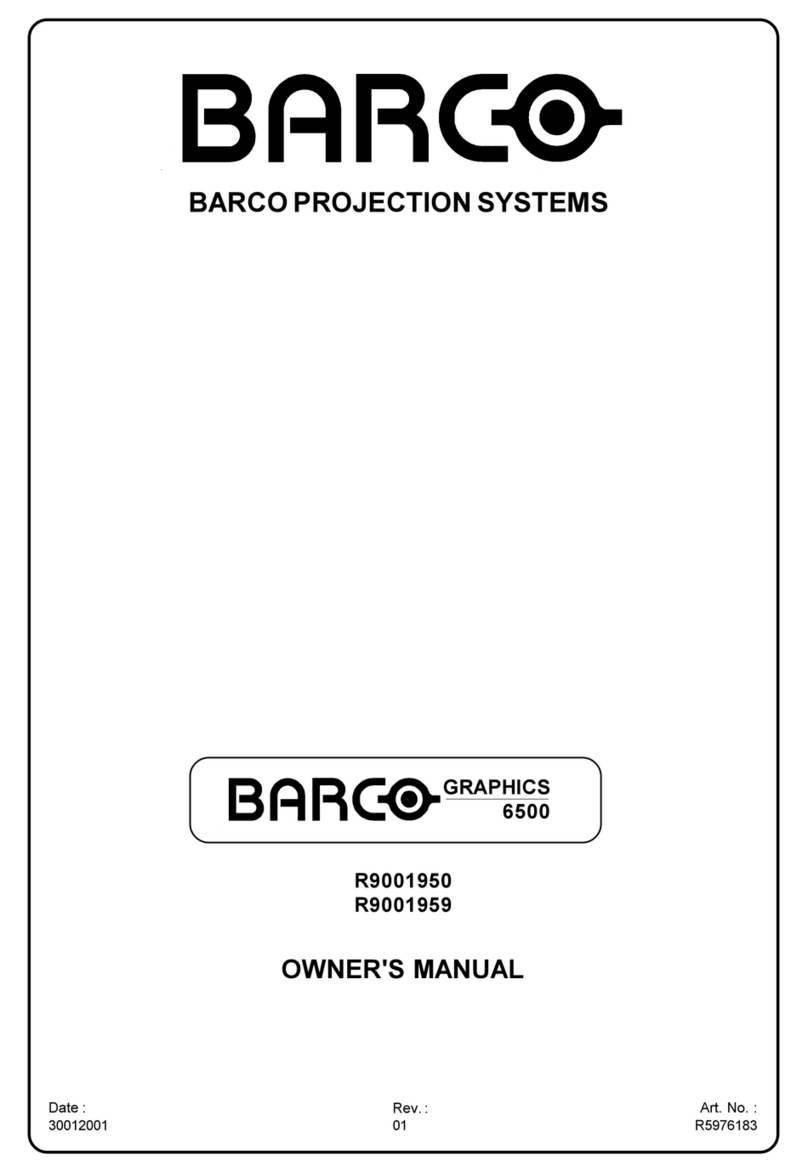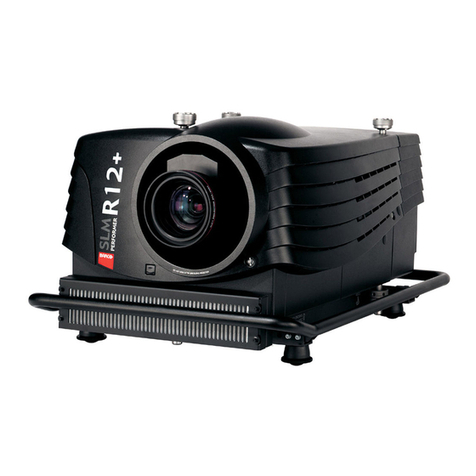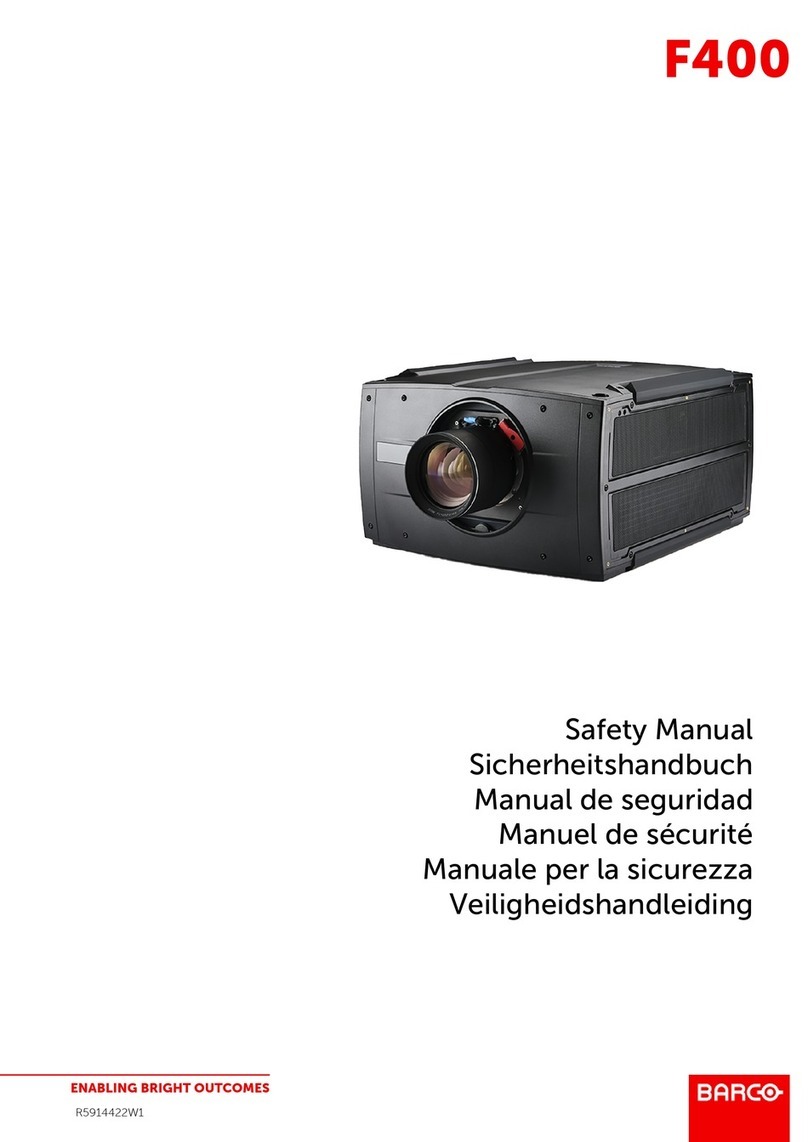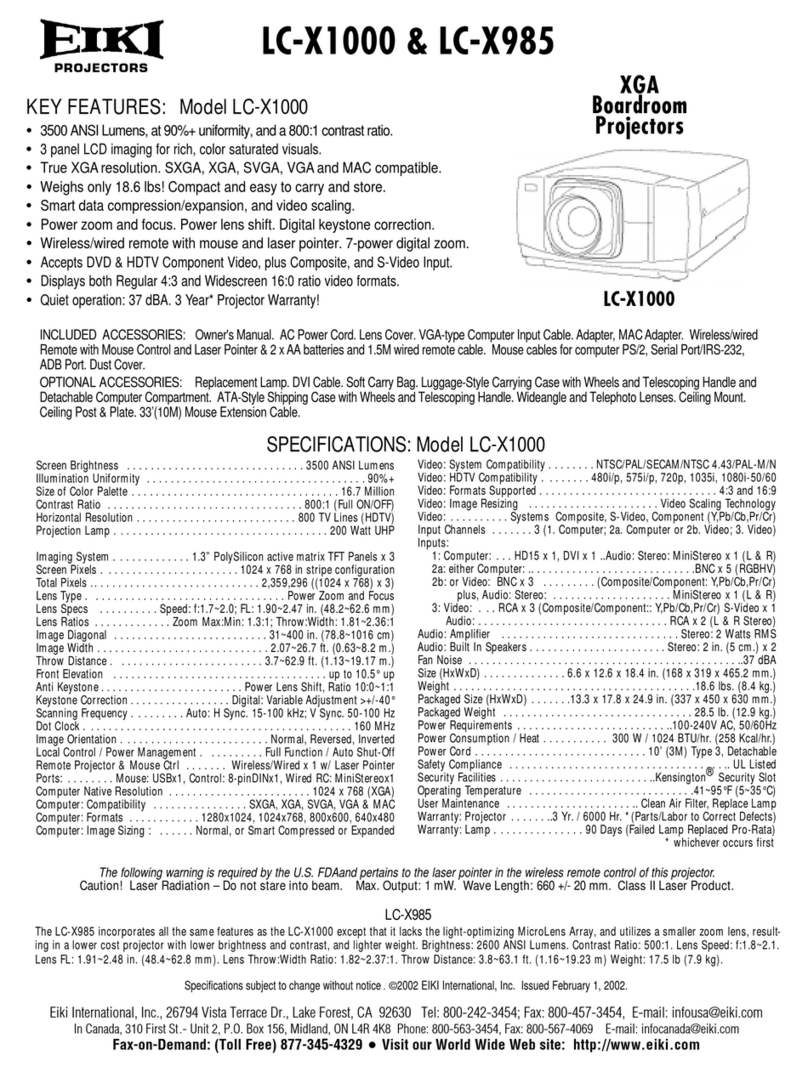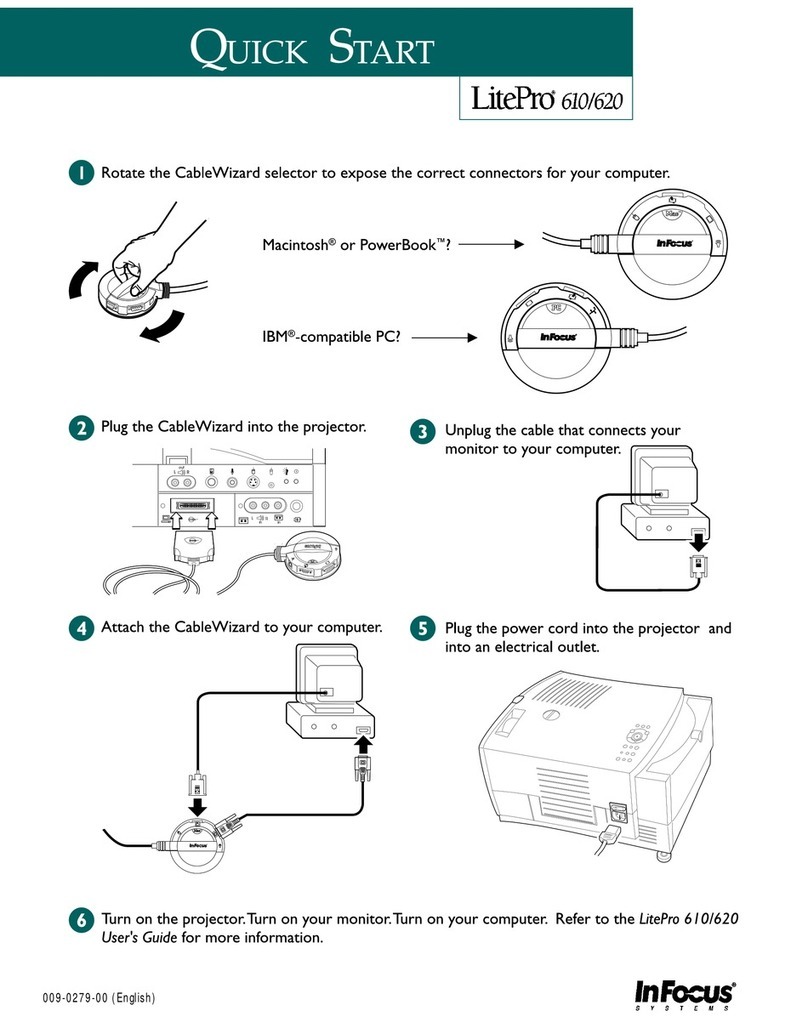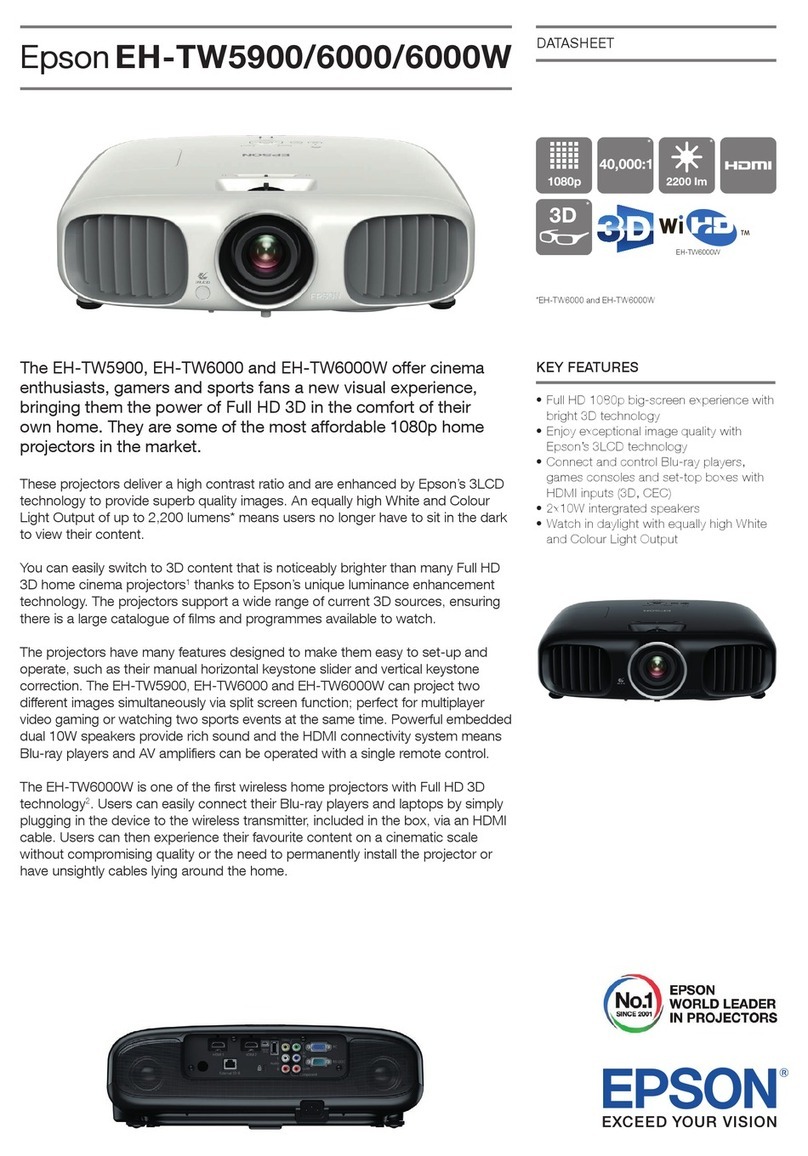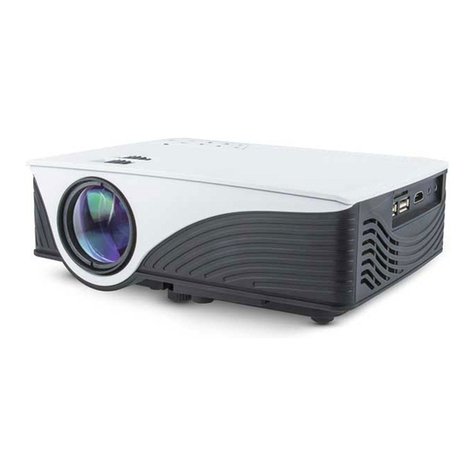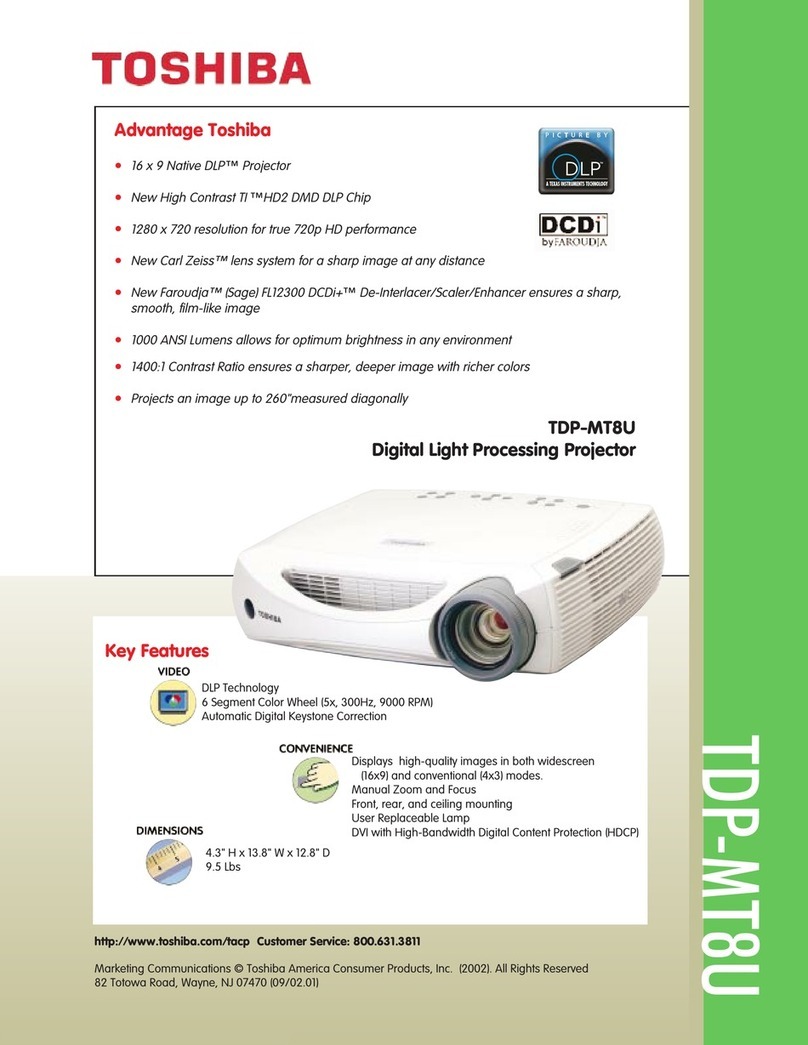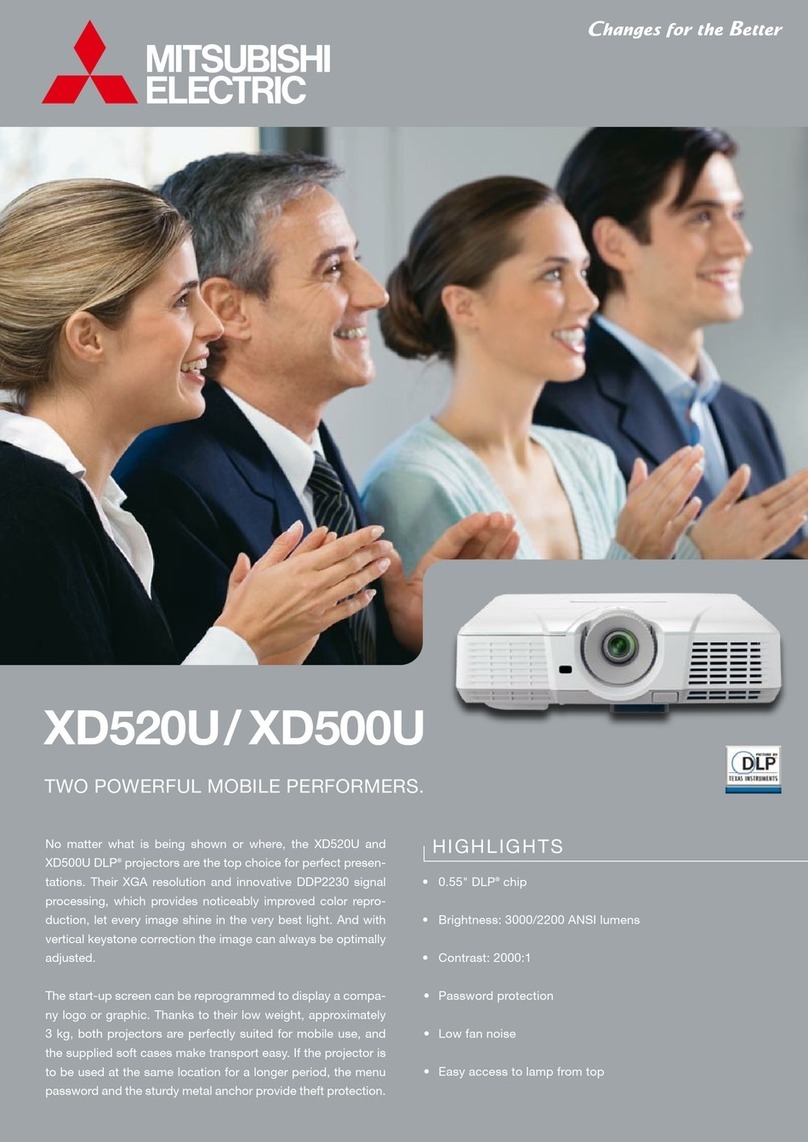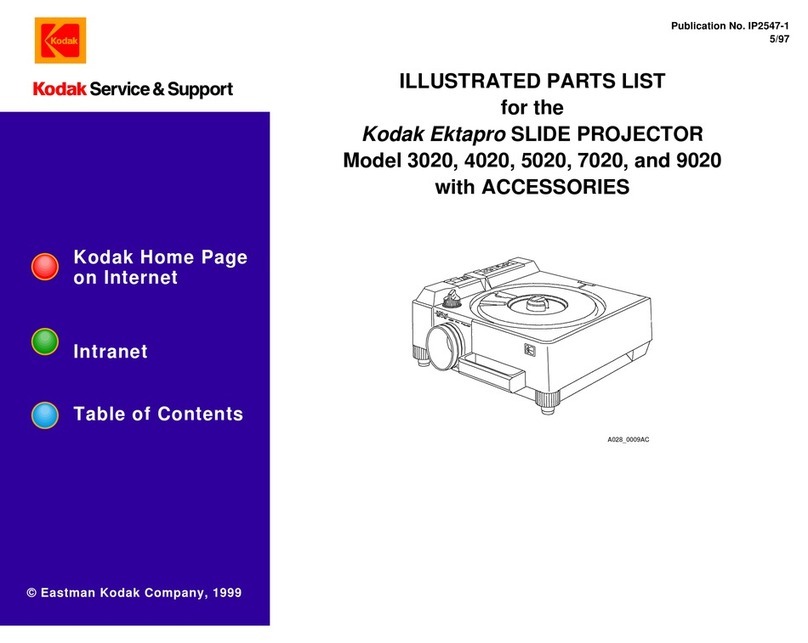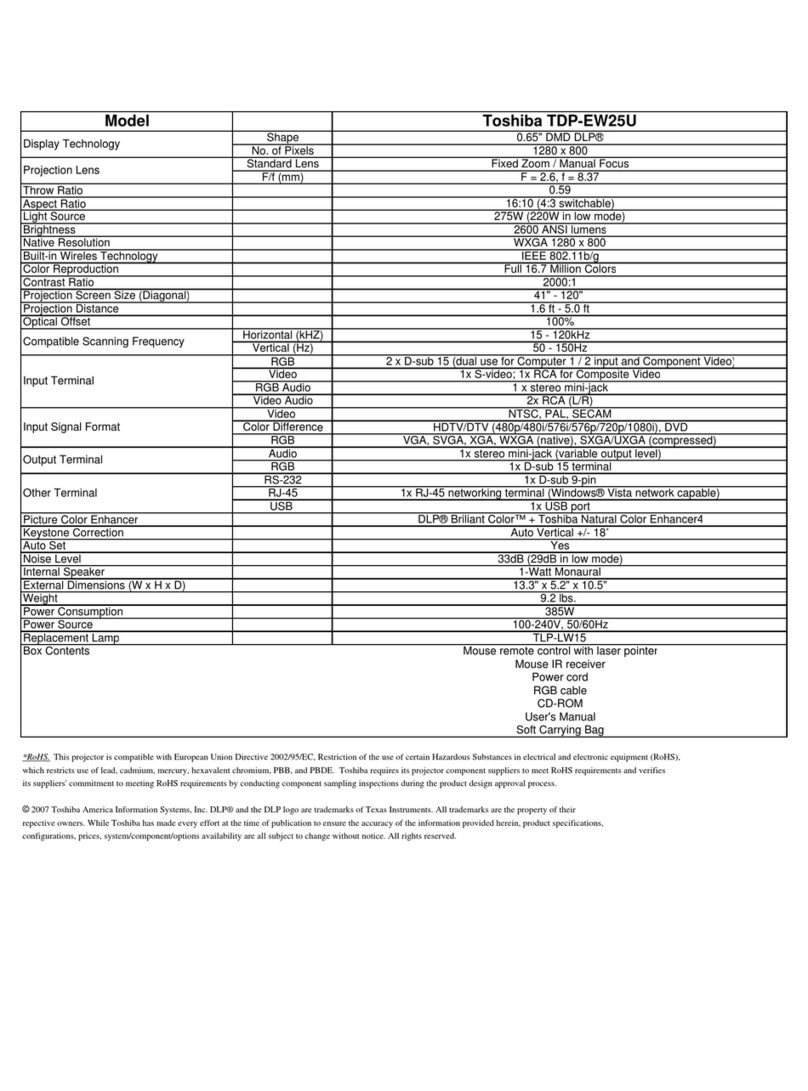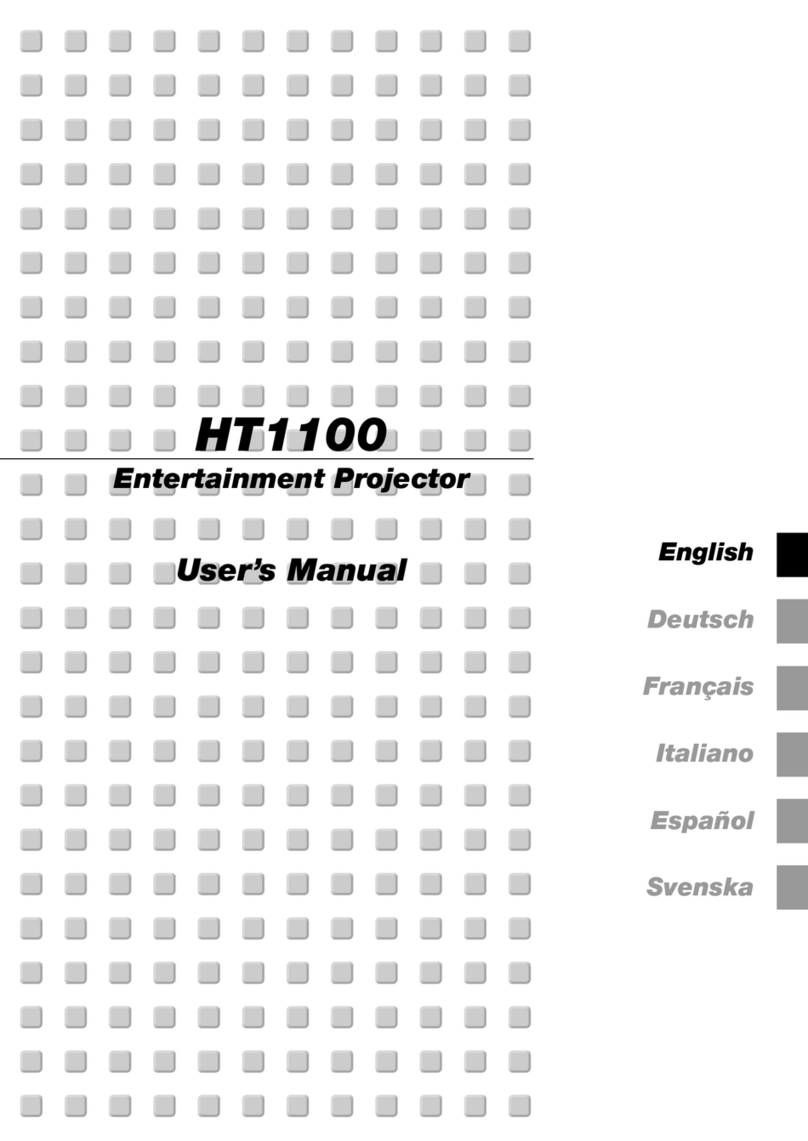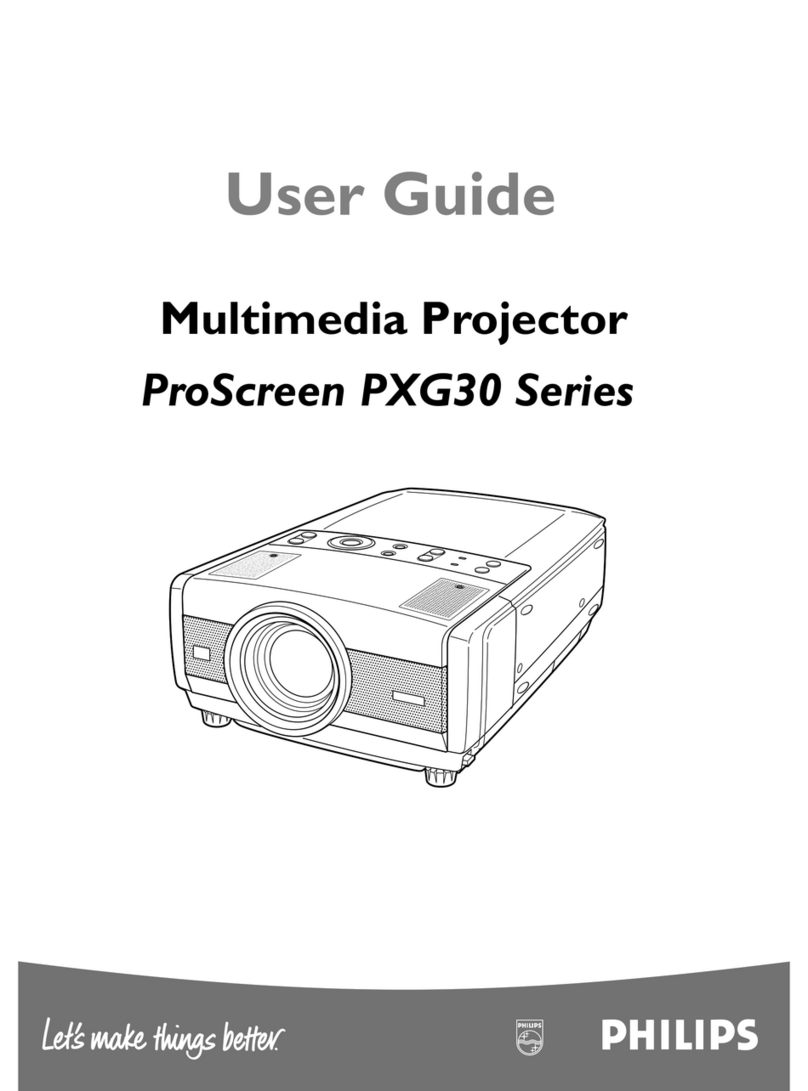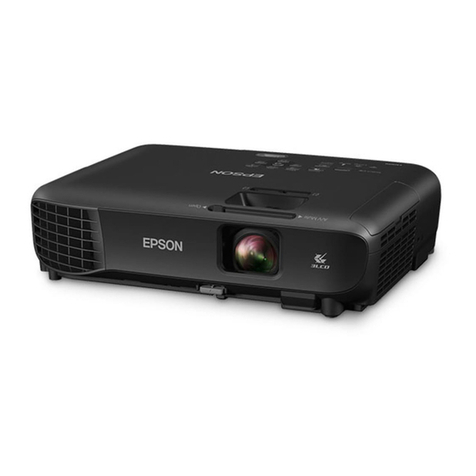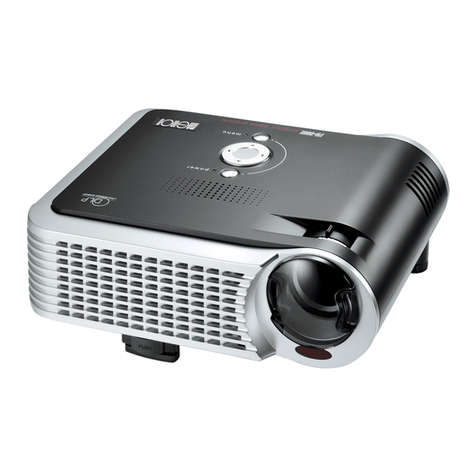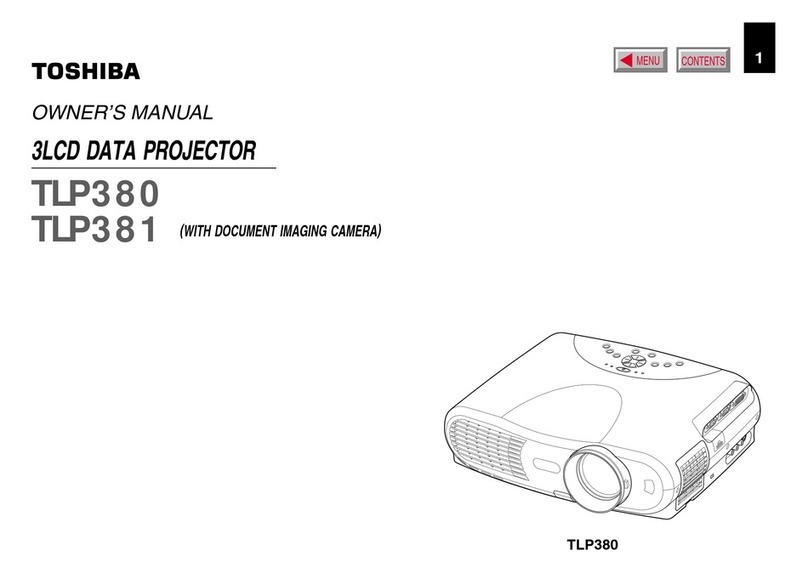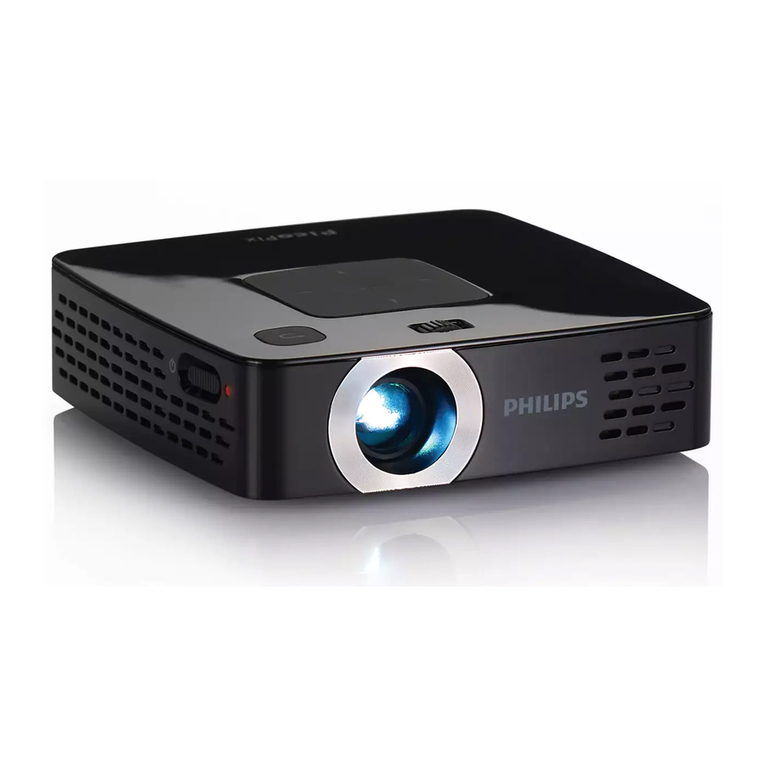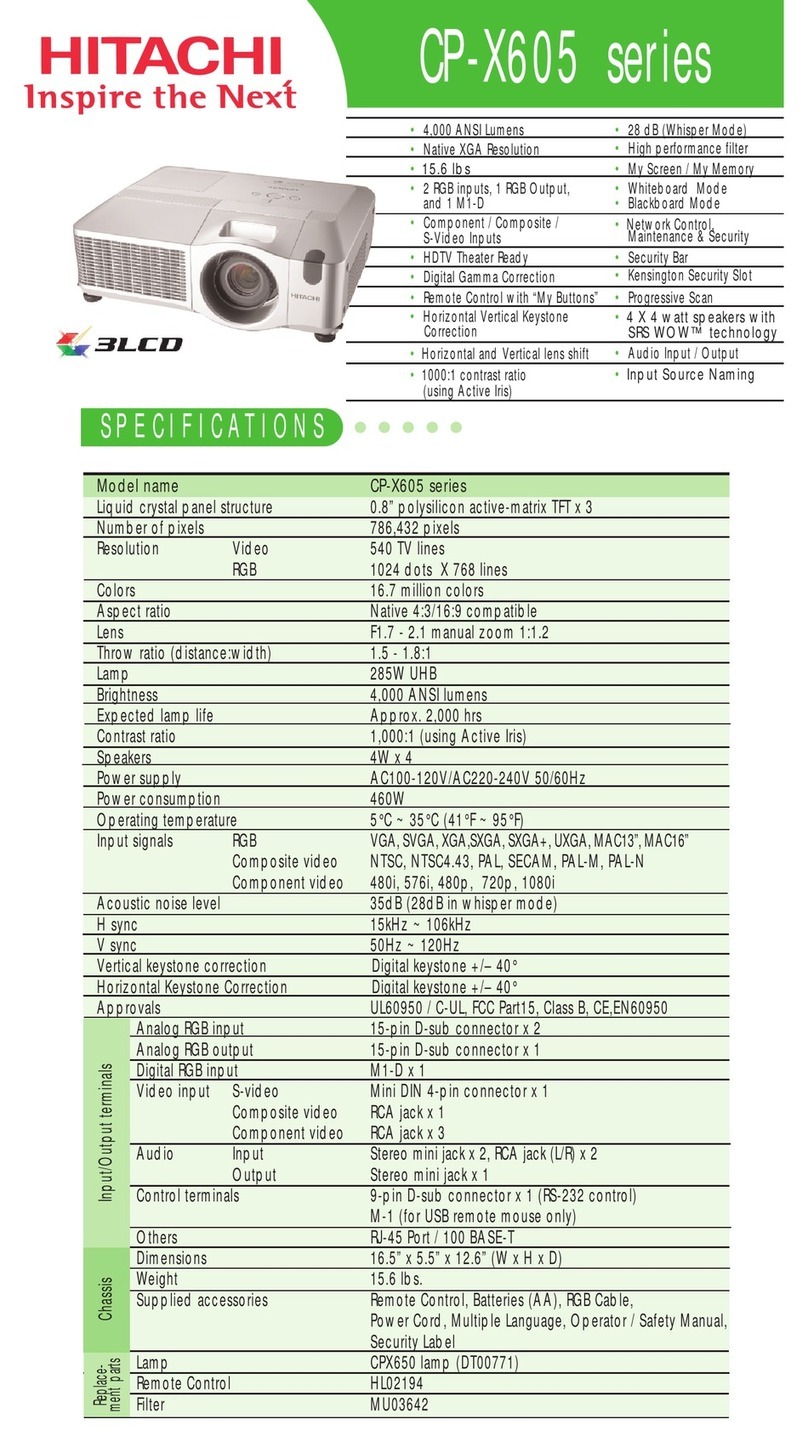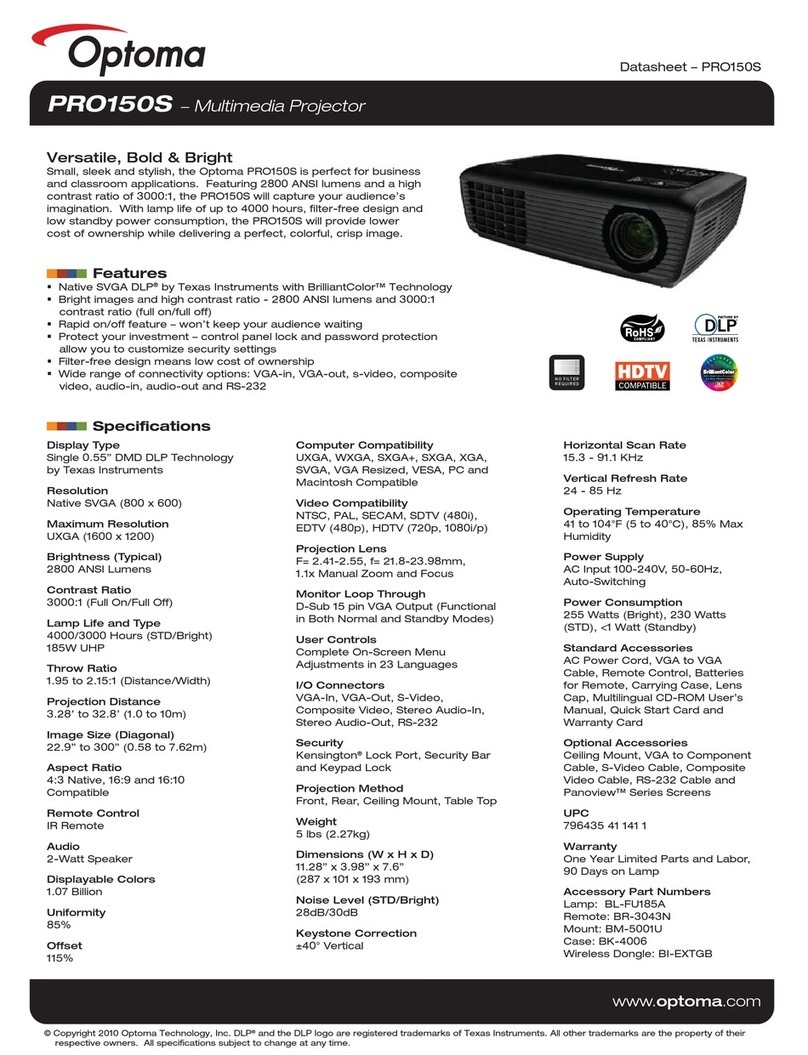
Table of contents
TABLE OF CONTENTS
1. Safety................................................................................................................ 3
1.1 General considerations.............................................................................................................. 3
1.2 Safety training to be provided by the installer ...................................................................................... 4
1.3 Important safety instructions ........................................................................................................ 4
1.4 High Brightness precautions: Hazard Distance (HD) .............................................................................. 7
1.5 HD for fully enclosed projection systems ........................................................................................... 9
1.6 HD in function of modifying optics ..................................................................................................10
2. Remote Control Unit..............................................................................................11
2.1 Remote control, battery installation.................................................................................................11
2.2 Using the XLR connector of the RCU...............................................................................................12
2.3 Remote control, on/off button .......................................................................................................12
3. Input & Communication..........................................................................................13
3.1 Introduction ..........................................................................................................................13
3.2 Input source connections – Quad combo input Mark II . ...........................................................................13
3.3 Input source connections – Quad combo input Mk I ...............................................................................17
3.4 Input source connections – Quad DP 1.2 Input board . . ...........................................................................20
3.5 Communication connections ........................................................................................................21
3.6 LED and Button indication chart ....................................................................................................23
4. Getting Started.....................................................................................................25
4.1 Functionality overview ...............................................................................................................25
4.2 Power on projector ..................................................................................................................26
4.3 Switching to standby ................................................................................................................28
4.4 Power off projector ..................................................................................................................28
4.5 Using the RCU.......................................................................................................................29
4.6 Projector Address.................................................................................................................... 30
4.6.1 Controlling the projector ......................................................................................................30
4.7 Quick setup via Direct access.......................................................................................................31
4.8 Software update .....................................................................................................................32
5. Graphic User Interface (GUI) ....................................................................................35
5.1 Overview.............................................................................................................................35
5.2 Navigation ...........................................................................................................................35
5.3 Test Patterns.........................................................................................................................36
6. Basic operations ..................................................................................................39
6.1 Displaying a single source ..........................................................................................................39
6.2 Displaying multiple sources: Stitched layouts ......................................................................................40
6.3 Connector Settings ..................................................................................................................41
6.4 Setting image levels manually ......................................................................................................43
6.5 Adjusting the sharpness.............................................................................................................44
6.6 Adjusting the gamma correction ....................................................................................................45
6.7 Setting a centered 16:9 image ......................................................................................................46
6.8 Setting the output resolution ........................................................................................................47
6.9 Lamp illumination.................................................................................................................... 47
6.10 Themes ..............................................................................................................................48
7. Advanced operations.............................................................................................49
7.1 P7 Realcolor......................................................................................................................... 49
7.2 HDR – Perceptual Quantizer (PQ) ..................................................................................................51
7.3 Configuring the lens, zoom-focus...................................................................................................52
7.4 Configuring the lens, shift ...........................................................................................................52
7.5 Configuring the lens, high contrast..................................................................................................53
7.6 Orientation ...........................................................................................................................53
7.7 Warping ..............................................................................................................................54
7.7.1 About warping.................................................................................................................54
7.7.2 Warping – On/Off .............................................................................................................54
7.7.3 Warping – Screen Size .......................................................................................................55
7.7.4 Warping – 4 corners adjustment..............................................................................................56
7.7.5 Warping – Bow................................................................................................................57
7.7.6 Warping – Warp files..........................................................................................................61
7.7.7 Warping – Latency control in a multi projector setup ........................................................................62
7.8 Blending..............................................................................................................................63
7.8.1 Blend & Mask .................................................................................................................64
7.8.2 Black level adjustment........................................................................................................66
7.8.3 Black Level Files..............................................................................................................67
7.8.4 Blend Files ....................................................................................................................68
7.9 3D projection.........................................................................................................................69
7.9.1 Active Stereo & Passive Stereo ..............................................................................................70
7.9.2 Setup process 3D projection .................................................................................................70
7.9.3 Connection possibilities.......................................................................................................70
R5906102 WODAN 10/04/2018 1
